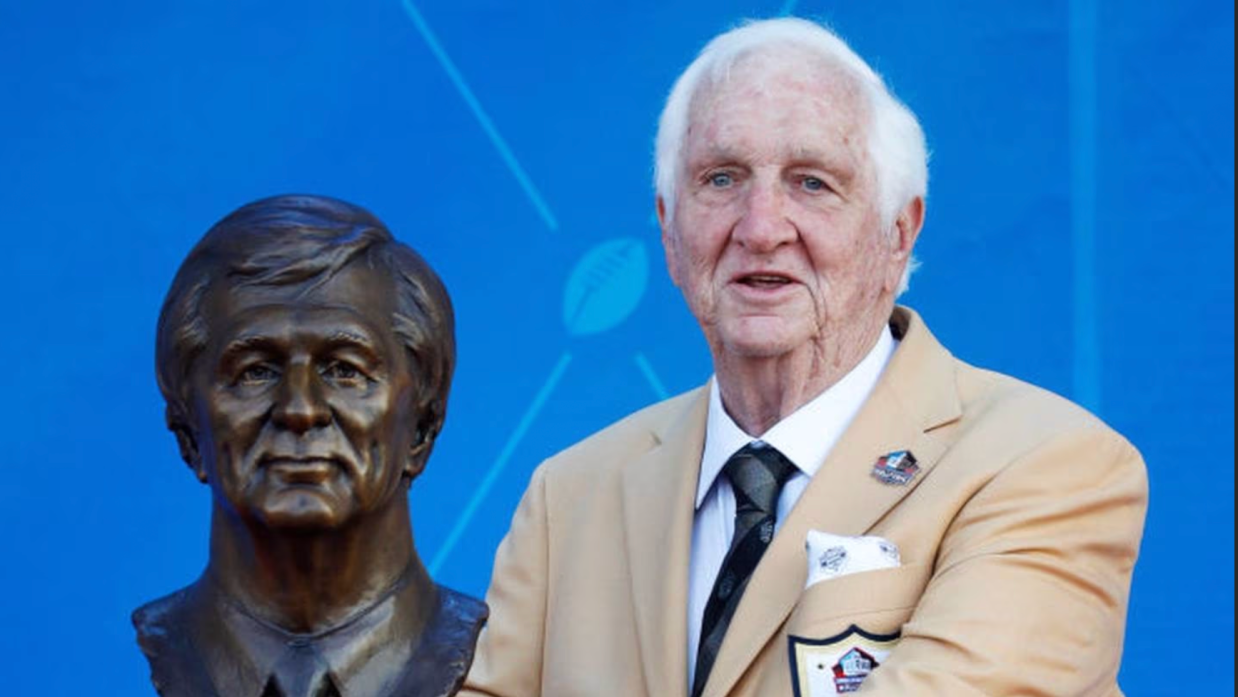Longtime NFL personnel executive and a friend to HBCUs and their players Gil Brandt passed Thursday. He was 91 years old.
Brandt served as the vice president of player personnel for the Dallas Cowboys from 1960 to 1988. Along with General Manager Tex Schramm and head coach Tom Landry, Brandt helped build Dallas into a formidable franchise and NFL champion after its admittance to the league in 1960.
He is credited with the introduction of computers and algorithms in scouting and evaluation of talent that helped revolutionize the draft and eventually the NFL Combine. He was voted into the Pro Football Hall of Fame in 2019, many years after Landry (1990) and Schramm (1991).
“To me,” former Dallas running back Calvin Hill, a first-round pick in 1969, said Thursday in a Hall of Fame story on Brandt’s passing, “Gil should have been the first one in terms of certainly from a personnel standpoint.”
Brandt became one of the first NFL personnel executives to challenge the norm of taking HBCU players in later rounds of the NFL draft.
James “Shack” Harris on Gil Brandt

“He was innovative,” said James “Shack” Harris, the former Grambling and NFL quarterback and league executive. Harris is co-founder of the Black College Football Hall of Fame. Fellow former Grambling and NFL quarterback Doug Williams is the other co-founder of the BCFHOF.
Harris, who became the first African-American to start an NFL season at quarterback, has known Brandt since 1968, his last year playing at Grambling when Brandt came to the school to scout him.
“He brought a lot of things to scouting,” Harris said. “Early on, he was one of the original ones that brought the numbering and testing system to evaluate players. He did a thorough job of scouting HBCUs. He was very instrumental in the success of the Cowboys.”
Dallas played in five Super Bowls and won two (VI in 1972, XII in 1978) during his 28-year tenure.
Gil Brandt and HBCU players
Brandt’s roster of HBCU players taken by Dallas either in the draft or as free agents during his tenure is voluminous.
They include draftees such as Bob Hayes (Florida A&M, 1964), Jefthro Pugh (Elizabeth City State, 1965), Rayfield Wright (Fort Valley State, 1967), Ed “Too Tall” Jones (Tennessee State, 1974), Thomas “Hollywood” Henderson (Langston, 1975) and Tim Newsome (Winston-Salem State, 1980).
Jones and Henderson were first round selections. Jones made history as the first HBCU player to be the top overall pick in the 1974 draft. Hayes and Wright are in the Pro Football Hall of Fame.
Nate Newton (Florida A&M, 1986) and Everson Walls (Grambling, 1988) are Cowboys’ free agents signed by Brandt.
“He was a difference-maker in terms of evaluations and really looking deep into the HBCU players and evaluating them,” Harris said. “He was always helpful and a person you could always approach.”
Doug Williams on Gil Brandt
Williams, the first African-American to quarterback an NFL team to a Super Bowl win, remembers Brandt fondly.
In 1978, just after his playing days at Grambling, Brandt and John Wooten, then working in personnel for the Cowboys, met Williams in Dallas. Wooten, who had an oustanding NFL career with Cleveland, became director of Pro Personnel for Dallas after Brandt’s retirement.
“They met me at the airport in Dallas against Coach (Eddie Robinson) Rob’s will,” Williams said. “Coach didn’t knew nothing about it, bless his soul,” Williams said. “They met me to take that test (the Wunderlich test).” Robinson refused to allow Grambling players to take the test on campus.
Teams had just begun using the test to predict player performances. Dallas’s Landry was the first to use the test.
“They flew me to Dallas, I took it in the airport and flew back home,” Williams said.
“I made 22 on that Wunderlich test,” said Williams. “I think I kinda blew them away a little bit,” Williams said.
Gil Brandt and the BCFHOF
“When we decided to start the Black College Football Hall of Fame, we knew that he was one guy that knew about the athletes that have gone to Historically Black Schools, especially in the South,” Williams said. “We picked Gil to be on the Board and he’s done a great job. He has helped not only picking the players, but he’s done a lot of interviews of the players. That’s been big for us as a group.
“He was a member of our Selection Committee for the Black College Football Hall of Fame because he had scouted so many of the (nominated) players and knew a lot of the players’ histories,” Harris said of Brandt. “He had been a real asset in selecting the Black College Football Hall of Fame players.”
